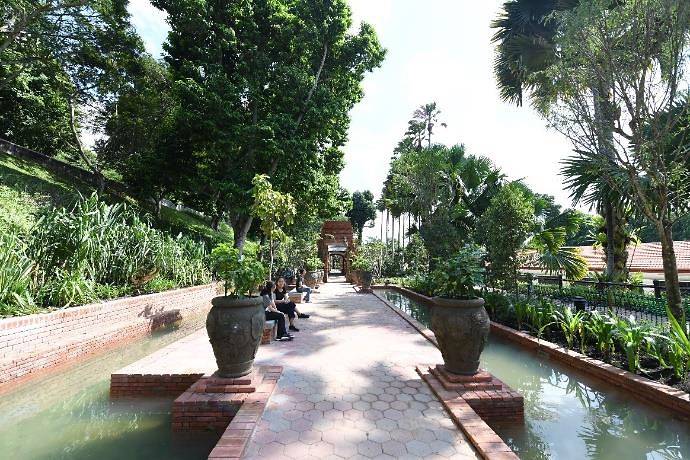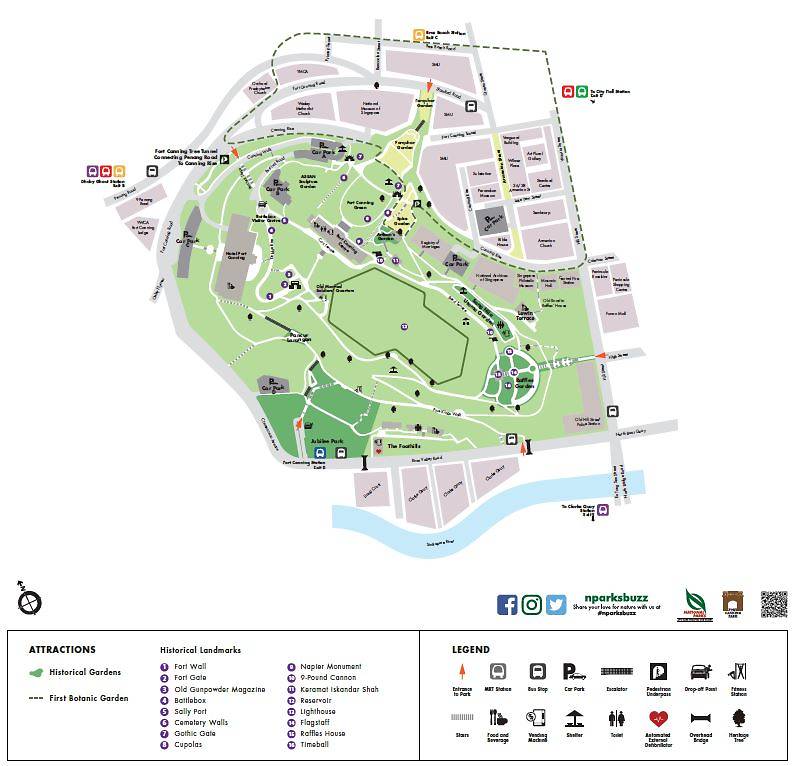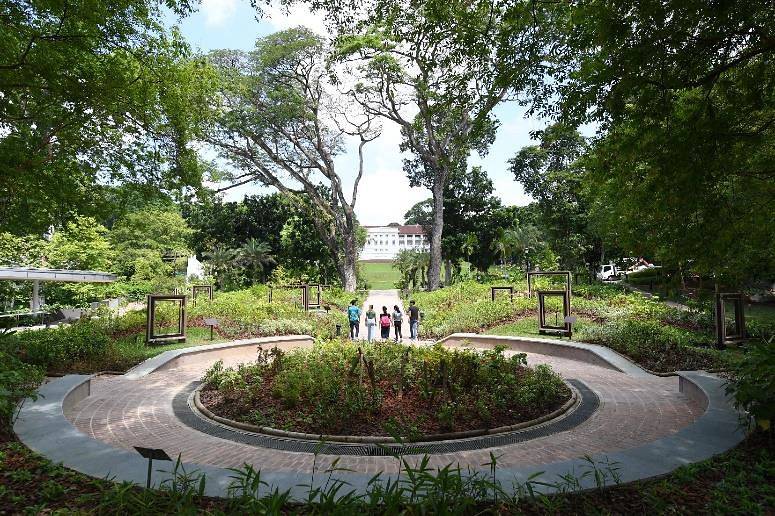SINGAPORE: Nine historical gardens, designed to tell the story of Fort Canning Park, opened on Monday (May 27).
About eight hectares of land were restored to reflect landscapes that were known to have existed in the 14th to 20th centuries.
The National Parks Board (NParks) referenced historical texts to restore and curate the nine gardens.
Stepping into the Sang Nila Utama Garden is a journey back in time: Named after one of the five kings who are believed to have resided at Fort Canning Hill, the garden reimagines a royal orchard in 14th-century palace grounds.

The Sang Nila Utama Garden is named after the ancient founder of Singapura. (Photo: National Parks Board)
Similarly, the Pancur Larangan, or Forbidden Spring in Malay, is modelled after a bathing place for noble ladies of the royal court of Singapura during the 1300s.
NParks has also restored the Singapore’s first experimental and botanical garden – which was established by the British in 1822 at the foot of Fort Canning Hill.
Other gardens include the Jubilee Park, Farquhar Garden, Spice Garden, Artisan’s Garden, Raffles Garden and Armenian Street Park.
The Pancur Larangan garden features a commissioned mural wall handcrafted in natural volcanic rock. (Photo: National Parks Board)
PROGRAMMES AT FORT CANNING
To bring the stories of Fort Canning to life, a trail guide on an augmented reality app developed by the National Heritage Board, called BALIKSG, will complement the experience.
READ: ‘We are never done building Singapore’: PM Lee at launch of Singapore Bicentennial
The augmented reality experience can be accessed at eight checkpoints through a 2.5km trail.
NParks is introducing a wider range of programmes which will reflect the history of Fort Canning.

Map of Fort Canning Park. (Image: National Parks Board)
It will work with archaeologists from the National University of Singapore, the Nanyang Technological University and the Institute of South-East Asian Studies to organise programmes through the year.
Visitors can look forward to archaeology workshops, guided heritage walks and concerts held in conjunction with From Singapore to Singaporean: The Bicentennial Experience.
READ: Bicentennial edition of Singapore Heritage Festival heads to Kranji, Bedok and Telok Blangah
NParks has also made efforts to make the park more accessible. It has installed two stretches of covered escalators and a platform lift to reach Fort Canning Centre and Fort Canning Park.
The connections will provide easier access from MRT stations such as Fort Canning, City Hall and Bras Basah.

The Farquhar Garden is named after Major-General William Farquhar, the first British Resident and Commandant of Singapore. (Photo: National Parks Board)
At the opening of the gardens, Minister for National Development and Second Finance Minister for Finance, Mr Lawrence Wong announced that the second phase of enhancements to Fort Canning Hill will be completed by 2021.
READ: Immersive, multisensory Bicentennial Experience showcase
It will include the complete restoration of Jubilee Park to cater for events and a nature playgarden. Galleries and eateries will also be added to the foothills of the park.
NParks is also conducting a year-long feasibility study on the possibility of a lookout point and gallery at the top of Fort Canning Hill.




